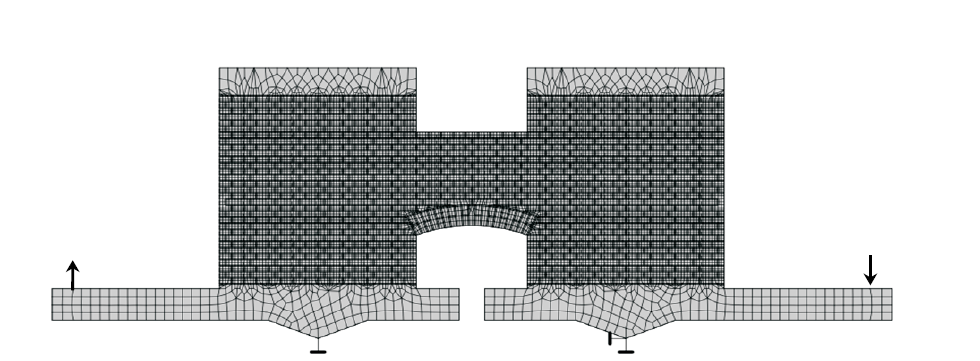1 Assistant Professor, Earthquake Engineering and Structural Dynamics Laboratory (EESD), School of Architecture, Civil and Environmental Engineering (ENAC), Ecole Polytechnique Fédérale de Lausanne (EPFL), Lausanne, Switzerland, katrin.beyer@epfl.ch
ABSTRACT
Spandrel elements in unreinforced brick m asonry buildings with timber floors consist of a masonry spandrel supported by either a tim ber lintel or a m asonry arch. When subjected to seismic loading, the force-deformation relationship of such spandrel elements can be described by a piecewise lin ear relationship which disting uishes two principal regim es: The first reg ime describes the behaviour up to peak strength of a largely uncracked spandrel. The second regim e is associated with a residual stren gth mechanism after the formation of major cracks in the spandrel. The residual strength of brick m asonry spandrels is often less th an 80% of their peak strength. Hence, according to established rules in seismic engineering for estimating the ultimate drift capacity of structural m embers, the resid ual strength would typically be neglected when assessing the seismic behaviour of existing buildings. However, the residual strength mechanism is typically associated with a rathe r large deformation capacity and it is therefore argued that it should be considered. Moreover, small cracks due to, for exam ple, previous earthquakes or differential foundation settlements might reduce the peak strength of the spandrel b ut will have little influence on its residual strength. This paper discusses on the basi s of experim ental and numerical results the dif ferent limit states of brick masonry spandrels subjected to seism ic loading, which characterise the two regimes and the ultimate rotation capacity of the spandrel.
KEYWORDS: unreinforced masonry, spandrels, limit states, performance limits, peak strength, residual strength
335.pdf



